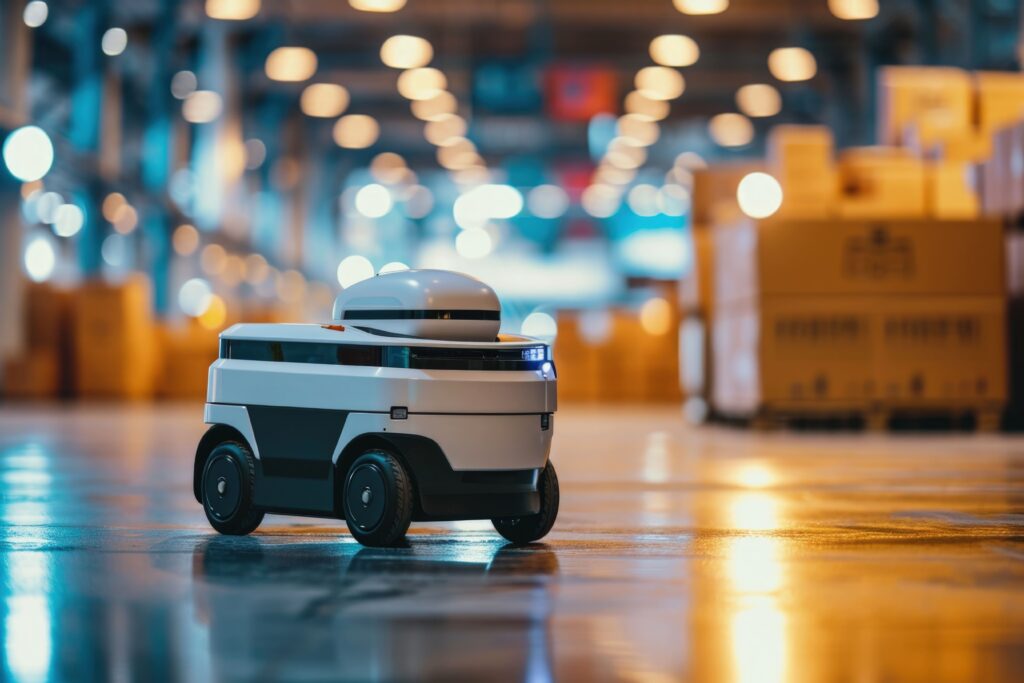The retail delivery market is entering a new phase with the launch of Amazon’s new grocery delivery service in over 1,000 U.S. cities. This revolutionary move enables Prime members to order electronics, apparel, and household necessities in a single cart with same-day delivery, along with perishable groceries like milk, bananas, and avocados.
This expansion indicates a rise in delivery volume, new revenue streams, and an increasing need for cold-chain logistics capabilities for independent logistics providers, Amazon DSPs, and last-mile delivery businesses.
Amazon Integrates Fresh Groceries Into Same-Day Delivery Across 1,000+ U.S. Cities
More than 1,000 American cities and towns now offer Amazon Prime grocery delivery, including Raleigh, North Carolina; Milwaukee, Wisconsin; and Columbus, Ohio. For orders over $25, Prime members receive free same-day delivery; smaller orders cost $2.99. The service is still available to non-Prime customers for $12.99 per order.
Including perishable goods in its fast last-mile delivery network, this is one of Amazon’s most ambitious grocery expansions to date. More route density and multi-category loads result from this integration, which boosts contracted carriers’ profitability.
How One Unified Cart For Perishables And Everyday Items Reshapes The Shopping Experience
Before, Amazon used to divide grocery fulfilment between Whole Foods Market and Amazon Fresh, which resulted in multiple carts and different delivery costs. Customers can now purchase both perishables and non-perishables, and receive them quickly, within hours.
Unified-cart orders include, for example:
- Combine a best-selling book with oranges and apples.
- Frozen pizza with DIY tools.
- Milk with clothes or computers.
Amazon is now breaking down barriers that have previously slowed the adoption of perishable delivery services by establishing a smooth online grocery shopping experience. Consumers no longer have to plan several orders or wait days for various product types because everything is delivered at the same time. Convenience is increased, and customers are encouraged to add more items per transaction, resulting in a one-stop digital marketplace that mimics and frequently exceeds the variety and speed of in-store shopping.
Amazon’s Aggressive Expansion Plan: 2,300 Cities And Towns By Year-End
By the end of the year, Amazon hopes to have more than 2,300 American cities and towns offering same-day grocery delivery, which is more than doubling its current reach. This is a well-thought-out growth strategy intended to increase market share and improve delivery times, and not just add more locations.
The rollout’s top priorities are:
- Small-town and rural delivery markets, where competitors frequently fall short in terms of coverage and speed.
- Combining non-grocery and perishable items on the same route to increase the density of last-mile deliveries.
- Finding the most popular grocery items in each market and placing them closer to consumers is done with AI-powered demand forecasting.
For logistics managers, this means:
1. There are more delivery windows to fill all day.
2. Opportunities to improve route planning for loads of mixed cargo.
3. Increased fleet utilization as a result of steady and diverse product demand.
This expansion is particularly important for Amazon DSPs. More delivery blocks will contain temperature-sensitive items as a result of the growth in cities and towns, which opens the door to more expensive delivery rates and customized route assignments. DSPs will have the best chance of winning and keeping these contracts if they make early investments in temperature-controlled vans, driver education for cold-chain compliance, and effective route optimization tools. To put it another way, DSPs who are prepared to modify their business practices to satisfy the new standards may find that Amazon’s grocery expansion represents the next significant source of income.
The Competitive Impact On Walmart Grocery Delivery, Kroger, And Target
The online grocery market is becoming more competitive as a result of Amazon’s action. Following the announcement, Walmart, Kroger, and Target all saw a decline in their stock prices.
- Walmart+, which serves both urban and suburban markets, provides same-day grocery delivery for $98/year. However, Amazon’s unified cart strategy, which allows perishables and non-perishables to be checked out at the same time, raises the bar for delivery convenience and may draw time-conscious customers away from Walmart’s platform.
- To compete with Amazon’s quickly growing same-day network, Kroger delivery and Target grocery services will need to increase their geographic reach, make investments in quicker fulfilment capabilities, and enhance inventory integration.
- With Whole Foods and Amazon Fresh excluded, Amazon’s grocery and household essentials sales in 2024 totalled over $100 billion, indicating both the growth of its market share and the size of the opportunity for carriers partnering in the last-mile grocery delivery segment.
These changes in competition create new partnership opportunities for delivery partners as several retailers compete to expand their last-mile capabilities.
Inside Amazon’s $4 Billion Investment To Triple Its Delivery Network Capacity By 2026
Amazon committed $4 billion in June 2025 to triple its delivery network in the next two years. This strategy consists of:
- Extending cold-chain logistics infrastructure to manage large quantities of perishable goods.
- Expanding into underserved delivery markets across the country, such as rural and small towns.
- Predicting local demand for grocery delivery items using artificial intelligence in logistics to enable quicker, more effective fulfilment.
This investment offers independent fleet owners and Amazon DSPs the opportunity to grow with the network in addition to gaining more package volume. AI-driven demand forecasting will cut down on idle time and deadhead miles, while increased route density will enable DSPs to service more stops in less time. DSPs can take advantage of premium contract opportunities that offer higher margins and long-term stability by preparing their fleets for temperature-sensitive cargo, as cold-chain delivery continues to grow in importance within Amazon’s operations.
Why Amazon’s Perishable Push Creates New Revenue Opportunities For Amazon DSPs And Independent Carriers
For FedEx ISPs, Amazon Delivery Service Partners, and last-mile carriers, this change represents a chance for logistics expansion rather than just a service update.
Some of the factors that drive revenue are:
- Diversified Load Capacity: Having a varied load capacity increases revenue per stop by combining small packages with fresh groceries.
- Demand for Year-round Delivery: Groceries don’t slow down during certain seasons. They sell year-round.
- Exclusive Market Positioning: Fleets that fulfil temperature-controlled transport requirements have an advantage in the competition for lucrative contracts due to their exclusive market positioning.
This is the time for carriers to get Amazon perishable delivery contracts and diversify into cold-chain delivery services.
MetroMax BPM: Enabling Carriers To Scale In The Perishable Delivery Market
At MetroMax BPM, we assist independent logistics companies, Amazon DSPs, and small-to-mid-sized carriers in making the cost-effective switch to perishable delivery. We offer contract acquisition assistance, fleet upgrade plans, and tools for route optimization to make sure your company maximizes return on investment while meeting Amazon’s performance requirements. With our help, you can use Amazon’s growth to your advantage.
Conclusion
The last-mile delivery sector is changing as a result of Amazon’s fresh grocery expansion to over 1,000 cities, with plans to reach 2,300 by the end of the year. The opportunity for Amazon DSPs and fleet owners is unparalleled, supported by $4 billion in logistics investment, AI-driven stocking, and the growing demand for speed and convenience.
There is pressure on the supermarket behemoths. The next stage of last-mile grocery delivery growth will be controlled by the carriers who act now.














